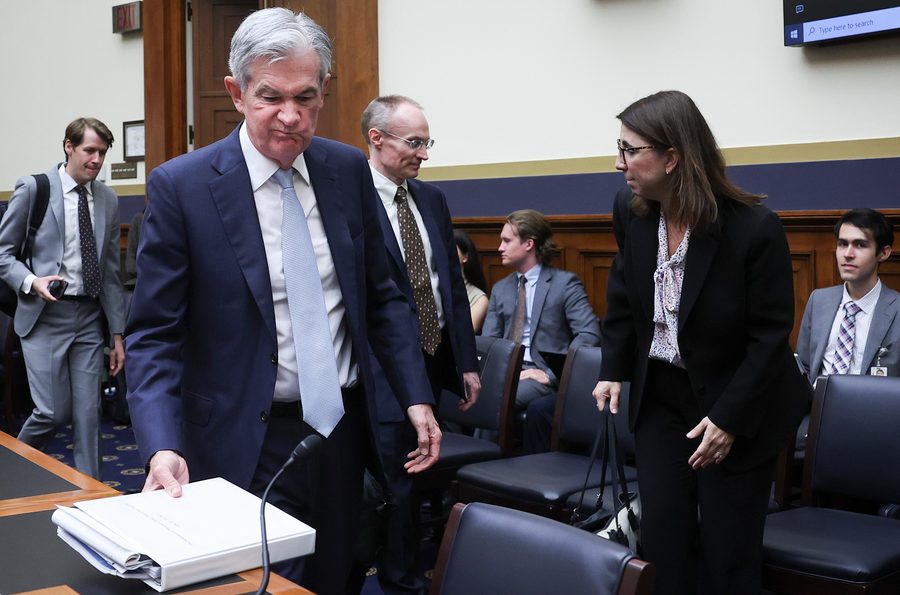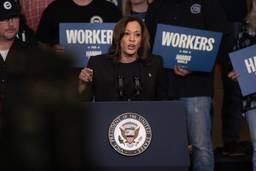Don’t Trust the Federal Reserve on Inflation
The Fed’s plan to curb inflation rests on punishing working people—when they’re the ones in need of relief.
Max B. Sawicky

Inflation is still high, but appearances can be deceptive. It may not actually be as high as you think, it may not last as long as you might fear, and there is other good news in the economy. While the federal government may not be well-situated to directly bring down prices, there are still things that President Biden and the Democrats could do by way of providing some relief for the working class. Unfortunately, the Federal Reserve is taking the opposite approach.
A common metric for inflation is the year-over-year rate of increase, recently as high as 8.6 percent. That’s a higher number than generally thought acceptable by economists, but it is not the end of the world, as far as the economy is concerned. The month-to-month change in May was just a fraction of that figure, but we usually hear the higher rate in media reports, which may be taken to suggest — without foundation — that prices will continue surging up for another year. There are indications that a turnaround is beginning.
Meanwhile, the mainstream coverage of inflation has completely obscured the good news. In particular, the unemployment rate is at historic lows, south of four percent. The employment level is now less than one percentage point short of its peak in early 2020, before Covid blew up. This means that more people have been able to find work and collect a paycheck, despite dour economic forecasts.
Media freak out
“If it bleeds, it leads” still determines news coverage of the economy, as in other domains. The jump in selected consumer prices now frequently leads the news, often highlighted by misleading pictures of gas prices in the highest-price states. Recession stories may dominate media coverage for the remainder of the year, boding ill for Democrats in the midterm elections.
Obscured is the fact that inflation has little to do with Democratic policies, and there is similarly little that they can currently do about it. Supply-side economics has an inglorious history, but some attention to the supply side would serve us well now. A good list of supply-side causes of inflation would start with the pandemic and the war in Ukraine.
The shutdowns due to Covid reduced output of consumer goods and services, allowing the more durable and resilient (or unscrupulous) firms to opportunistically jack up prices. This is sometimes attributed to the big tech monopolies, but monopolies always want to price as high as they can. And the fact that they are monopolies means they need not worry about competitors — they can fully exploit any momentary gaps in supply by raising prices as they see fit.
The other biggest factor is commodity price spikes due to the war, especially in grain (an export of both Russia and Ukraine), and petroleum products (Russia, combined with our butchery ally, Saudi Arabia). NATO’s war-related sanctions on Russia, the effectiveness and motivations of which are open to debate, have not facilitated Russia’s foreign trade.
But despite the imponderable end of the war and the arrival of new Covid variants, the fact is that supply glitches should resolve in the short term. That is one thing capitalism is generally good at.
For the political left-of-center, all this is cold comfort. The biggest price increases remain prominent in the news, which is affecting voter sentiment everywhere, and not in favor of Democrats’ weak grip on power.
Still, it is curious that price increases are held to outrage the working class, even while numerous examples of voter indifference to their economic interests are swept aside. Why would working people ignore their state governments’ unwillingness to expand Medicaid, which is available under current law but refused in 12 states, while being exercised over the price of milk? From this writer’s perspective, it is not obvious that the popular inflation bugaboo is really an economic concern, rather than a surrogate for other resentments.
The weak side
In contrast to the neglect of thorny supply-side factors, demand-side issues are trumpeted as if they were dominant, and solutions were easy. Neither is the case. The two boogeymen of the demand side are surging consumer spending and the wage half of the proverbial “wage-price spiral.”
Ahead of the pandemic, roughly before April 2020, inflation was very low. After some limited action by the Congress, under both former President Trump and Biden, incomes were boosted temporarily. Even so, more recently, disposable personal income has been lower than it was before the pandemic hit. After a surge in the beginning of 2021, real personal consumption expenditures settled down to low levels of growth in the third quarter. Since 2020 there have been unusual bumps in public spending, but for these to fuel inflation they would have to show up in the data on income and consumer spending.
As for wages, as Josh Bivens of the Economic Policy Institute points out, wage growth has been high but also lagging inflation, which means wages as a whole are reducing the overall inflation rate. “High” in this context means 4.4 percent, which may not sound like much, but is still better than the usual, pitiful lower levels.
Taken together, these two points underline the futility, if not malevolence, of the Federal Reserve’s determination to whip inflation by whipping the working class, notwithstanding the latter’s lack of a role in inflation. By reducing its holdings of government bonds (selling more than it might otherwise buy), the Fed is vacuuming up money that might otherwise find its way into spending and push up prices. The Fed has also used its tools to raise interest rates, which reduces business investment and the purchase of consumer durables.
The clear intent is to slow down the economy and sacrifice employment. The impact on inflation is limited, but the economic elite hold the view that it’s worth the burdens on workers. As Fed Chair Jerome Powell recently admitted, increasing interest rates is not expected to bring down the prices of groceries and gas — the two greatest sources of inflation.
In the 1980s, then-Fed Chair Paul Volcker was infamous for this policy, which drove the economy into a nasty recession. Then it was called “sado-monetarism.” These days, former Clinton and Obama economic guru Larry Summers is its most prominent tribune.
The effect of these moves will likely mean boosting Republican prospects in the elections of 2022 and 2024.
Evidence of the Fed’s economic sabotage may be found in the decrease of the Gross Domestic Product adjusted for inflation in the first quarter of this year. A decrease in the second quarter, which may be announced within two weeks, could put the United States officially in “recession” territory.
It might be noted that the reductions in GDP have been less evident on the coasts, with their relatively higher levels of state and local government spending, than in the Midwest and Mountain West. The latter reflect their dependence on mining, quarrying, and oil and gas extraction — all part of the supply side.
If, for some months now, employment and consumer spending have been comparable to their levels at the beginning of 2020, when little inflation was visible, how can they be at the root of current inflation? The Fed and its army of the best and brightest economists really have a lot to answer for.
Remedies
For all their shortcomings, Biden and the Democrats have a tough row to hoe. To begin with, they don’t control the Federal Reserve. A historic political inhibition for Democrats is to proclaim that the Fed is beyond reproach. Of course, this never stops Republicans. The newest Democratic appointee, the reputedly “woke” Lael Brainard, seems to have had little positive impact, wokey or otherwise.
Given the incorrigible duo of Sens. Joe Manchin (D-W.V.) and Kyrsten Sinema (D-Ariz.), there is little scope for Biden and his Congressional allies to provide any relief legislatively, as they did during the first half of 2021. With a couple of extra Democratic senators next year, the Congress could provide support in different forms, such as reupping the expanded Child Tax Credit of 2021. More public spending might not have much impact on inflation, and it is unlikely to do much for employment, which is already very high. Other actions could be taken on the executive level, including canceling student debt, which would ease the financial burden on millions of borrowers.
If Manchin and Sinema were serious about deficits, and if they really believed federal spending causes inflation, it would be an easy fiscal matter to provide “deficit-neutral” relief by simply reducing defense expenditures, which keep ballooning in good times and bad, in peace or in war. But so far they have not ventured into taking such a stance.
Hand-wringing over inflation has been the bum rap on activist, liberal economic policy for a hundred years. In actual practice, the danger of inflation reaching ruinous levels is slight, while the harm of insufficient employment is stark and constant. The bias of a politically remote Federal Reserve against robust employment is only beginning to draw some flack
from the most progressive members of Congress. The Democratic Party has barely caught on to the most profound institutional obstacle to progressive economic policy.
Max B. Sawicky is an economist and writer in Virginia, formerly with the Government Accountability Office and the Economic Policy Institute. He is a Senior Research Fellow at the Center for Economic and Policy Research and runs the MaxSpeak, You Listen! blog at sawicky.substack.com.







